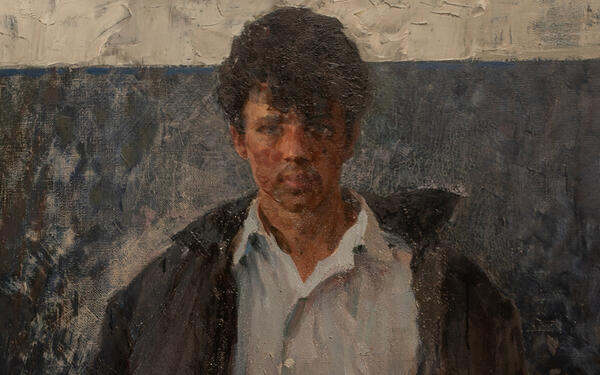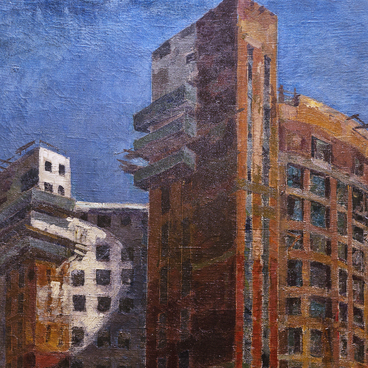The painting ‘Young Worker’ was created by Alexander Yegidis in Nizhny Tagil. After graduating from the Surikov Art Institute in Moscow, he went to Nizhny Tagil, where he resided for six years, teaching at the Art and Graphic Department of the Nizhny Tagil Pedagogical Institute.
The Art and Graphic Department was acknowledged for its fundamental and thorough academic training. Students of this department studied art, drawing and composition, as well as processing various materials from wood to fabrics. The institute faculty and graduates viewed creative freedom and search for new formats to be as important as having a good academic background. All those concepts are present in the 1964 ‘Young Workman’.
In late 1958, the Supreme Soviet of the USSR adopted the law ‘On strengthening the relations between school and life and on popular schooling system further development in the USSR’, which inspired the painter’s choice of subject matter for the “Young Worker”. The main objective of the law was to help the country with lacking labor force and to train children during school so that they were ready to go to work right after graduating. To do so, two days a week high school students had to work at enterprises or on collective farms. Another important aspect was creating more opportunities for working youth to do part-time study and correspondent education.
The painting “Young Worker” shows a young man who combines work and study. He holds a notebook in his hands, and its cover depicts the hammer and sickle.
The portrait has a touch of spontaneity to it as if Yegedis randomly picked one of the students from the evening department crowd and asked him to pose right there in the hall. The painter worked in broad and confident brush strokes. At the same time, when painting the young man’s figure, he abided by all academic principles, meticulously rendering the volume with effects of light and shadow and preserving the overall anatomical accuracy.
Experts propose to view this painting as a certain unique point in Soviet history, for it symbolizes a new generation of Soviet youth soon to experience the transition into adulthood.
The Art and Graphic Department was acknowledged for its fundamental and thorough academic training. Students of this department studied art, drawing and composition, as well as processing various materials from wood to fabrics. The institute faculty and graduates viewed creative freedom and search for new formats to be as important as having a good academic background. All those concepts are present in the 1964 ‘Young Workman’.
In late 1958, the Supreme Soviet of the USSR adopted the law ‘On strengthening the relations between school and life and on popular schooling system further development in the USSR’, which inspired the painter’s choice of subject matter for the “Young Worker”. The main objective of the law was to help the country with lacking labor force and to train children during school so that they were ready to go to work right after graduating. To do so, two days a week high school students had to work at enterprises or on collective farms. Another important aspect was creating more opportunities for working youth to do part-time study and correspondent education.
The painting “Young Worker” shows a young man who combines work and study. He holds a notebook in his hands, and its cover depicts the hammer and sickle.
The portrait has a touch of spontaneity to it as if Yegedis randomly picked one of the students from the evening department crowd and asked him to pose right there in the hall. The painter worked in broad and confident brush strokes. At the same time, when painting the young man’s figure, he abided by all academic principles, meticulously rendering the volume with effects of light and shadow and preserving the overall anatomical accuracy.
Experts propose to view this painting as a certain unique point in Soviet history, for it symbolizes a new generation of Soviet youth soon to experience the transition into adulthood.



